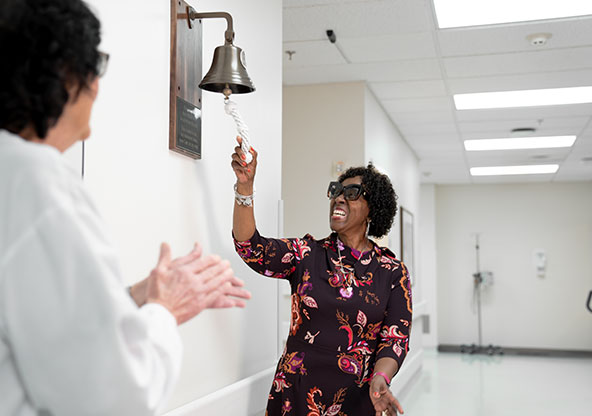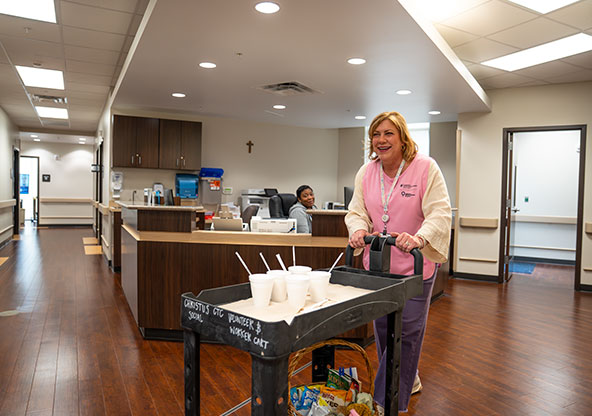What You Need to Know about Breast Cancer Surgeries

Restoring You, Restoring Hope
Information provided by Whitney Huddleston, M. D., General Surgery, Christus Trinity Clinic
A breast cancer diagnosis brings many questions, and we're here to help you find the answers. Because your journey is your own, we'll work closely with you to create a personalized treatment plan and guide you through each step of the procedure process.
Breast Reconstruction: Meet Our Expert
Breast Conservation, Mastectomy and Prophylactic Surgery
Breast Conservation
When breast cancers are found early in a patient and are quite small, they’re good candidates for breast conservation, which is a smaller surgery. Breast conservation surgery removes the cancerous tissue or tumor while leaving much of the breast intake.
Mastectomy
Mastectomy is the removal of all of the breast tissue from a breast to prevent or treat breast cancer. Some patients are not candidates for mastectomy just due to several factors. Some patients need chemotherapy before mastectomy surgery.
There are multiple types of mastectomies.
- Simple mastectomy: This procedure will remove the entire breast, the nipple, the ring surrounding the nipple, and much of the overlying skin.
- Modified radical mastectomy: The entire breast is removed, including the nipple, the overlying skin, the areola, and the lining of the chest muscles. A small number of lymph nodes under the arm are removed as well.
- Radical mastectomy: The entire breast is removed, including the nipple, the areola, the lymph nodes under the arm, the chest muscles under the breast, and the areola. The procedure is rarely done.
Some newer techniques include skin-sparing and nipple-sparing mastectomies most surgeries that we do now are one-day procedures.
- Skin-sparing mastectomy: The tissue of the breast is removed along with the nipple and areola. Most of the skin over the breast is saved. The surgery works just as well as radical mastectomy.
- Nipple-sparing mastectomy: This is almost the same as skin-sparing mastectomy. All of the breast tissue, including the ducts, nipple, and areola, are removed. The skin, nipple, and areola are all preserved.
Prophylactic Surgery
Prophylactic surgery removes one or both breasts to lower a person’s chances of getting breast cancer. Prophylactic surgery is for those who know they are at a greater risk of developing breast cancer.
Breast cancer treatments come down to what is technically feasible from a surgery standpoint for the patient. Some surgeries also come down to the preference of the patient.
Also, several things come into play for the patient such as genetic predispositions. Some women have genetic mutations that predispose them to breast cancer and ovarian cancer. Then it’s discussed to use prophylactic or risk-producing mastectomy.
What is the Procedure Process for Breast Cancer Surgery?
A patient arrives at the facility to have their procedure done and most people go home the same day. Typically, the post-surgery operation depends on the type of surgery you have. If you’ve had a small surgery like a lumpectomy typically there’s no drain that needs to be taken care of.
Usually, the post-surgery operation consists of monitoring the incision at home. Then the patient will visit the doctor’s office in a couple of weeks to review their pathology report and make sure their incisions are healing properly. Typically, there is some drain care that is involved and it’s something that we make sure our patients are comfortable with before sending them home.
Why is Every Breast Cancer Diagnoses Unique?
Everyone needs to understand that every breast cancer diagnosis and every breast cancer patient is unique. Doctors look at each patient’s history and perform a good physical exam so the doctor can best understand every individual.
After reviewing all of your breast imaging, you will meet with your doctors and talk about all of your options. A lot of times, for the doctor and the patient, it’s a mutual decision as far as what the next steps are going to be taken as far as surgery.




